Fantastic for pollinators and gardeners alike, there’s no mistaking Globe Thistles, Echinops, for any other plants in the garden!
The name Echinops comes from the joining of two latin words, Echinos meaning “hedgehog” and ops meaning “looking like” – hedgehog look-a-likes! It’s unclear exactly when Echinops found their way into UK gardens but it’s likely their introduction was fairly early and accidental! Echinops-type plants have been referenced in garden literature as far back as the 16th century and were classified by Linneaus himself in 1753.

Taxonomy
While in the UK we are familiar with only a small handful of Echinops species, in truth Echinops are a hugely varied genus with over 120 species described to date! Belonging to the Asteraceae, Echinops are closely related to many daisy type plants, however their closest relatives are other thistles including Cirsium, Cynara and Onopordum – with all being classified in the Cynarae tribe.

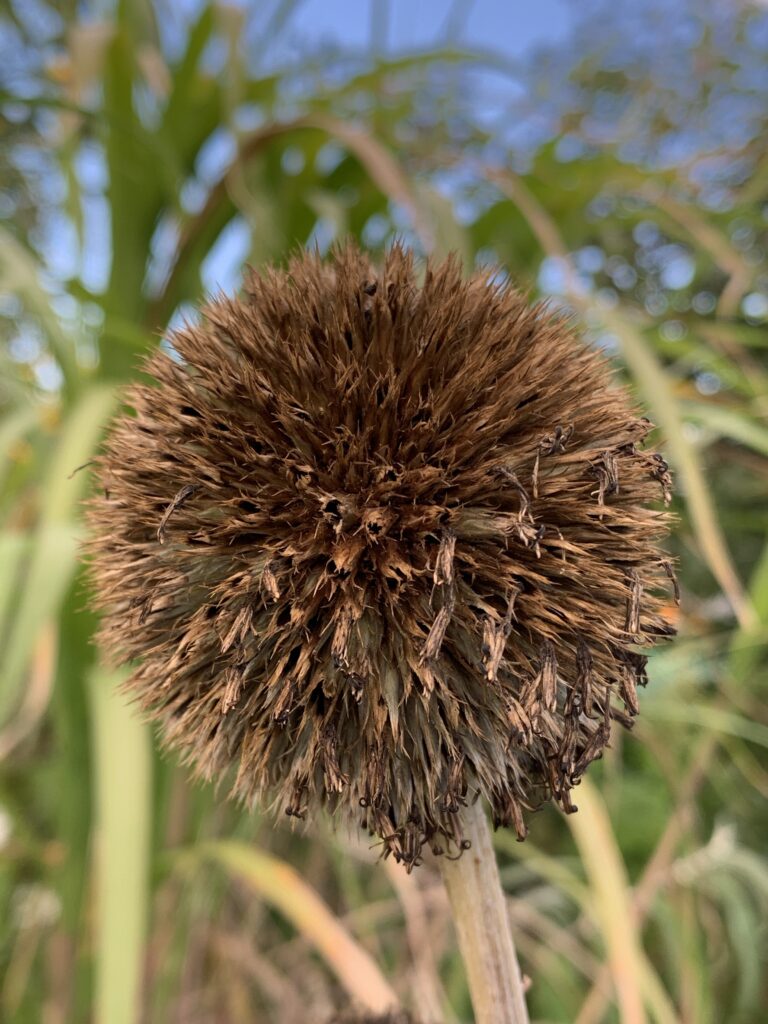
In common with all other plants in the Asteraceae, the distinctive spherical inflorescences (known as a capitulum) of Echinops are actually composed of many hundreds of small individual flowers. It is for this reason that Echinops are able to bear so many seeds and are renowned for their ease of seed raising and affinity for spreading around in the garden.
Geographic Distribution
Of the Echinops species available to UK gardeners, the vast majority originate from cooler regions of Europe. Echinops however have a much wider spread than just Europe, with many of the 120+ species endemic to western and central Asian alongside mountainous and tropical regions of Africa!
Flower Colour
Besides their uniquely spherical flowers, Echinops are best known for their vivid blue flowers – a significantly rare colour in the garden. The blues of Echinops range from dark steely blues through to more muted, powder blues or pale purple hues. These flowers alongside their tall stature has cemented Echinops as stalwarts of UK gardens.
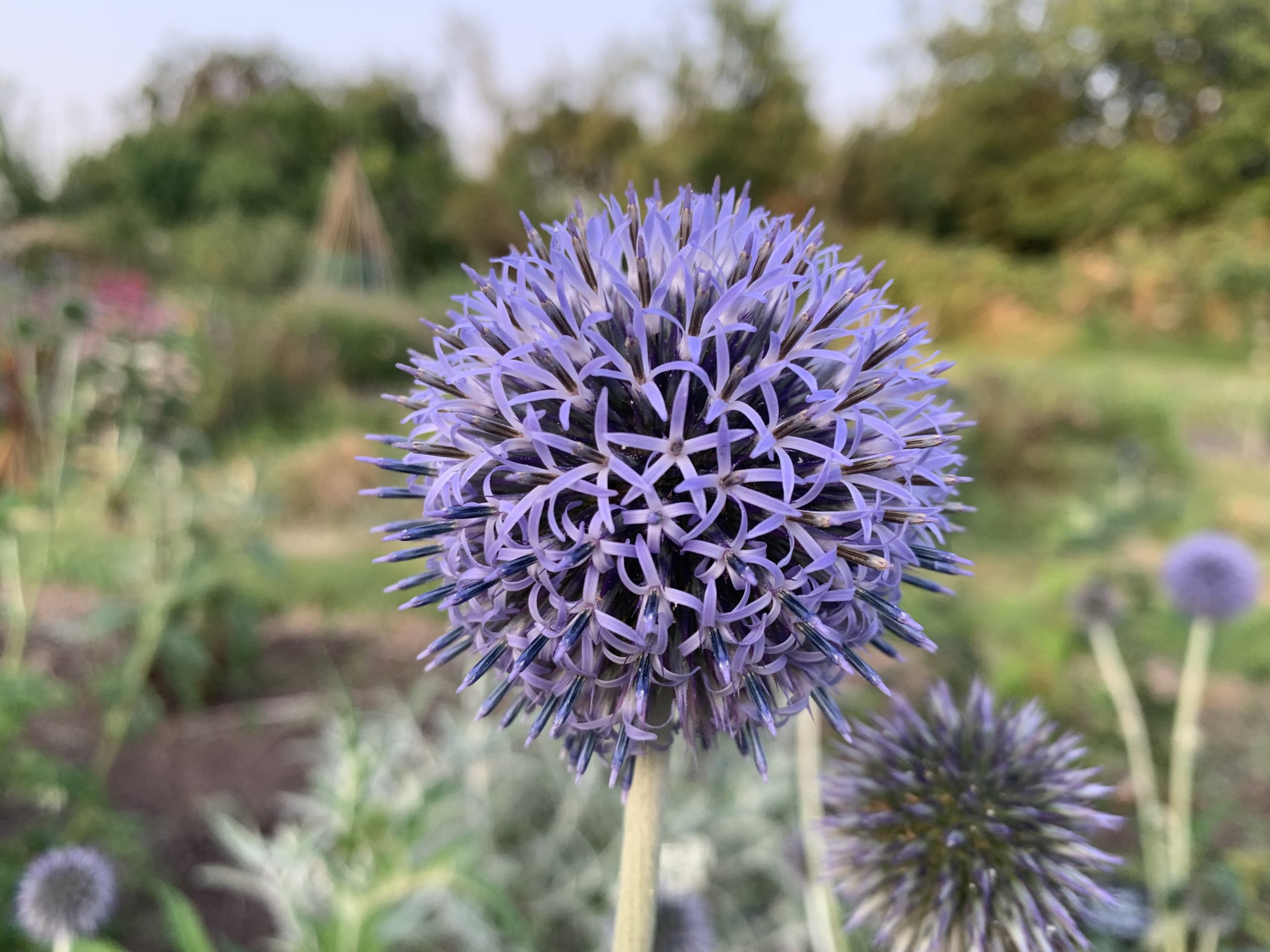
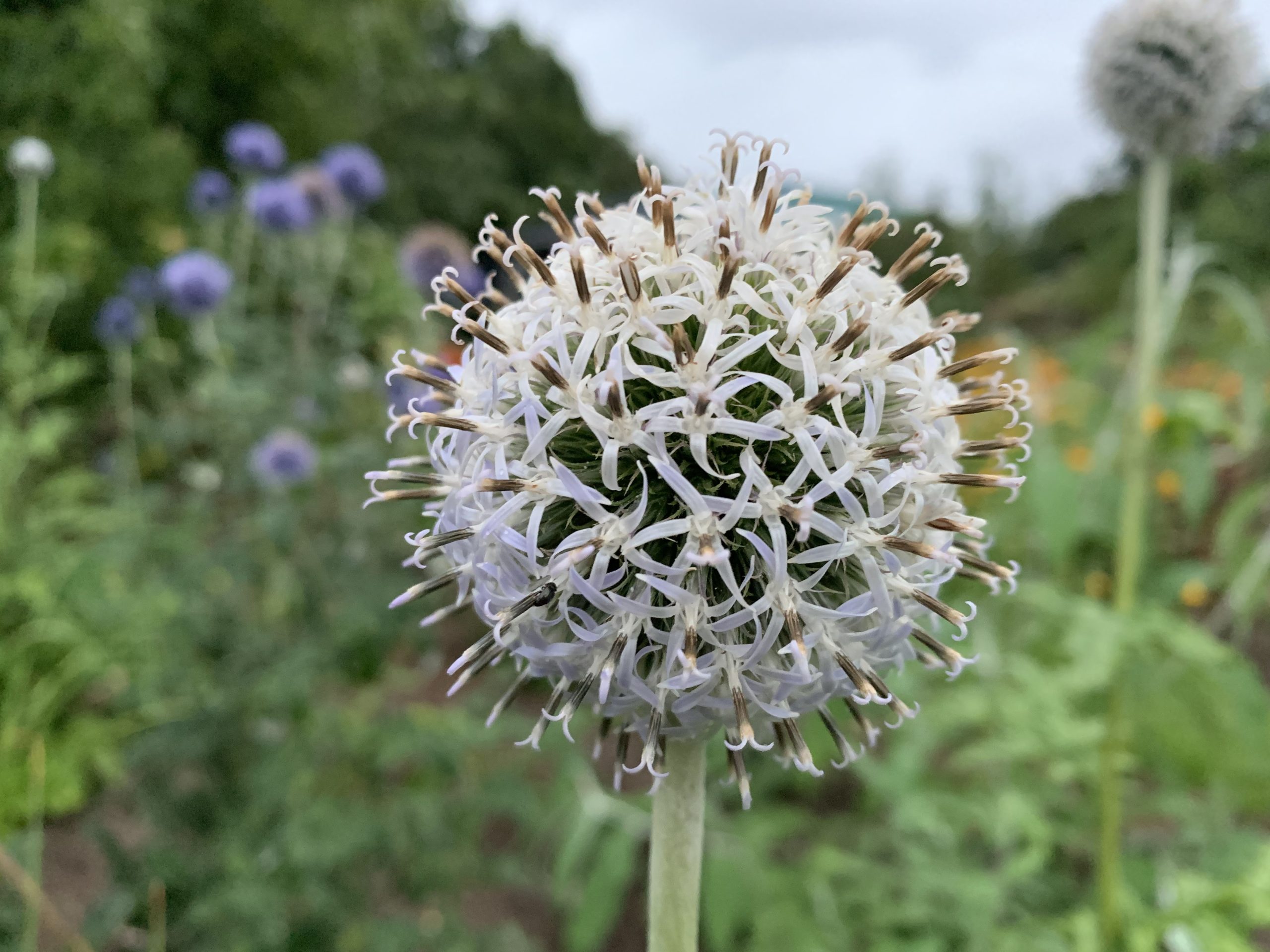
Not all Echinops flowers are blue though – with just as many having white flowers. These whites often include shades of grey and silver. White Echinops have become increasingly popular in recent years, particularly in gardens with more subdued colour schemes where their brash blue cousins would be unwelcome.
While blues and whites are by far the most common colours among Echinops, there do exist some significant outliers among the 120 species. Without doubt the most striking are Echinops amplexicaulis and Echinops longisetus, which both have wonderful dark crimson coloured flowers!
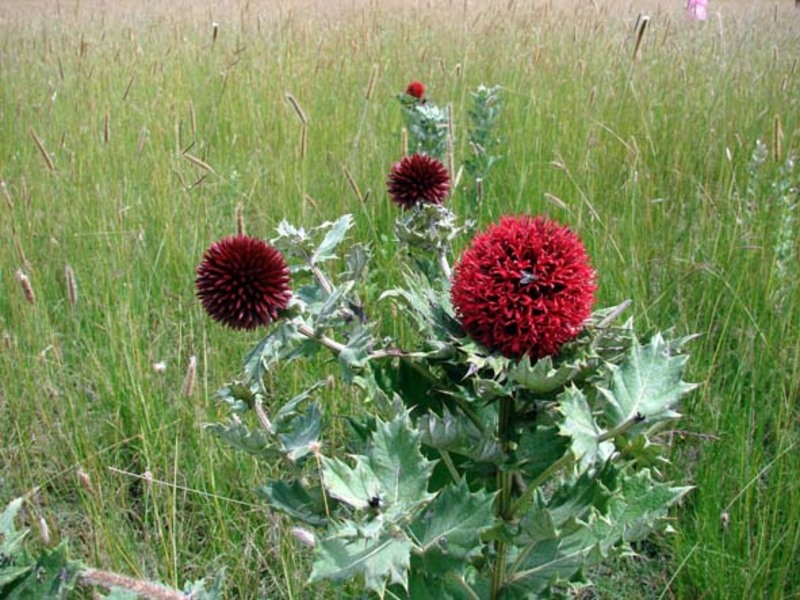
Foliage
While it is the blue and white spherical flowers for which a majority of people grow Echinops, the foliage of Echinops can also make an attractive addition to the garden – particularly for those able to appreciate the beauty of spiky foliage.


As herbaceous perennials Echinops disappear entirely from the garden over Winter and only reappear from the ground in the following Spring. Upon emerging, Echinops are among the fastest growing perennials in the garden, rapidly producing tall stems adorned with lush spiky leaves with a rich green or greyish hue.
As the season progress, Echinops are always in contention for the tallest perennials in the border. While tall perennials often ring alarm bells for many gardeners worried about collapsing plants, Echinops are surprisingly sturdy plants with support often unnecessary in all but the most exposed gardens.
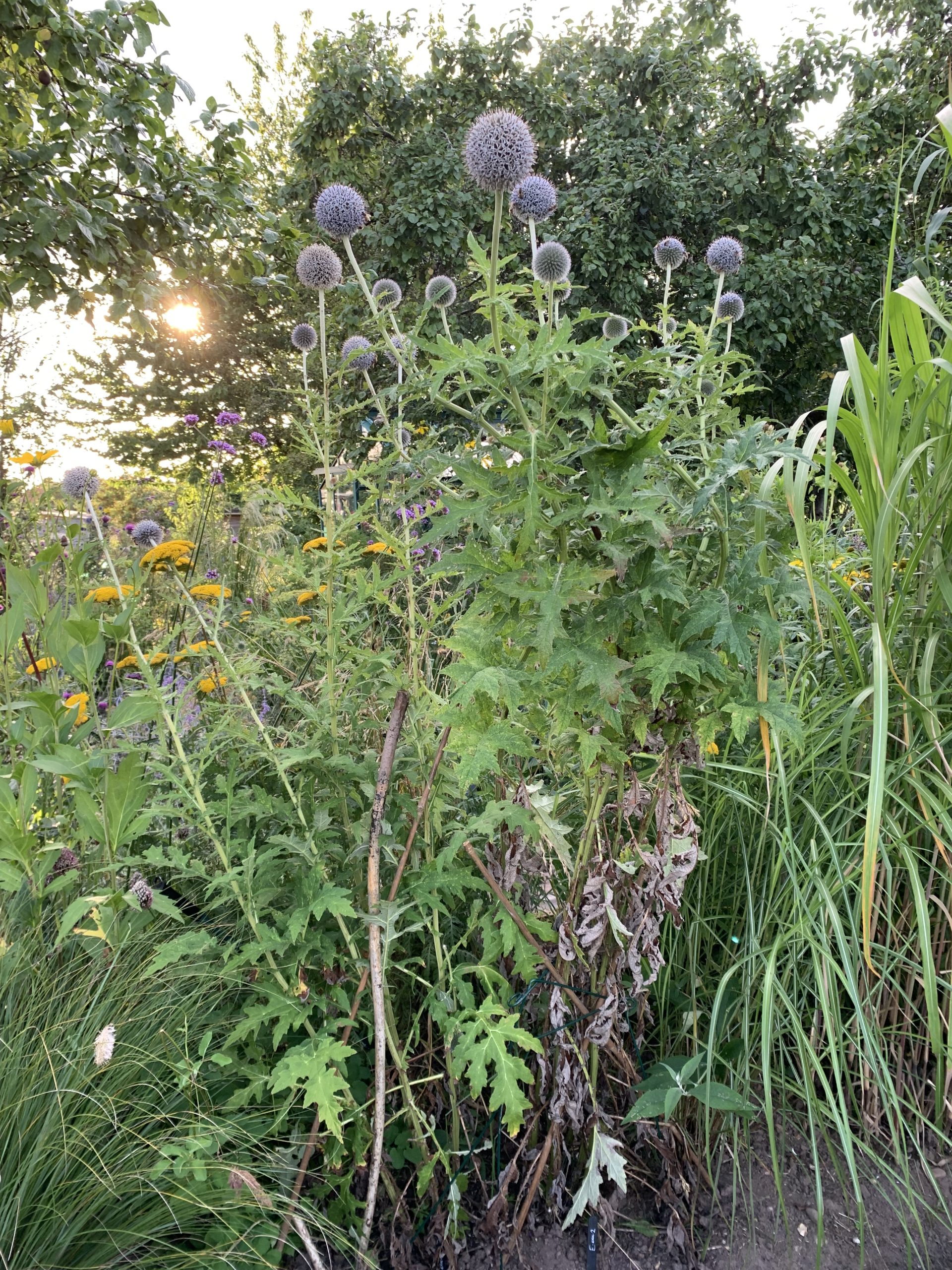
Echinops and pollinators
Few plants are as attractive to pollinators as Echinops. Throughout the Summer and Autumn, Echinops flowers are invariably covered in a wealth of insect pollinators, being particularly attractive to many species of bee, hoverfly and butterfly. Echinops are therefore a stalwart of the wildlife garden.
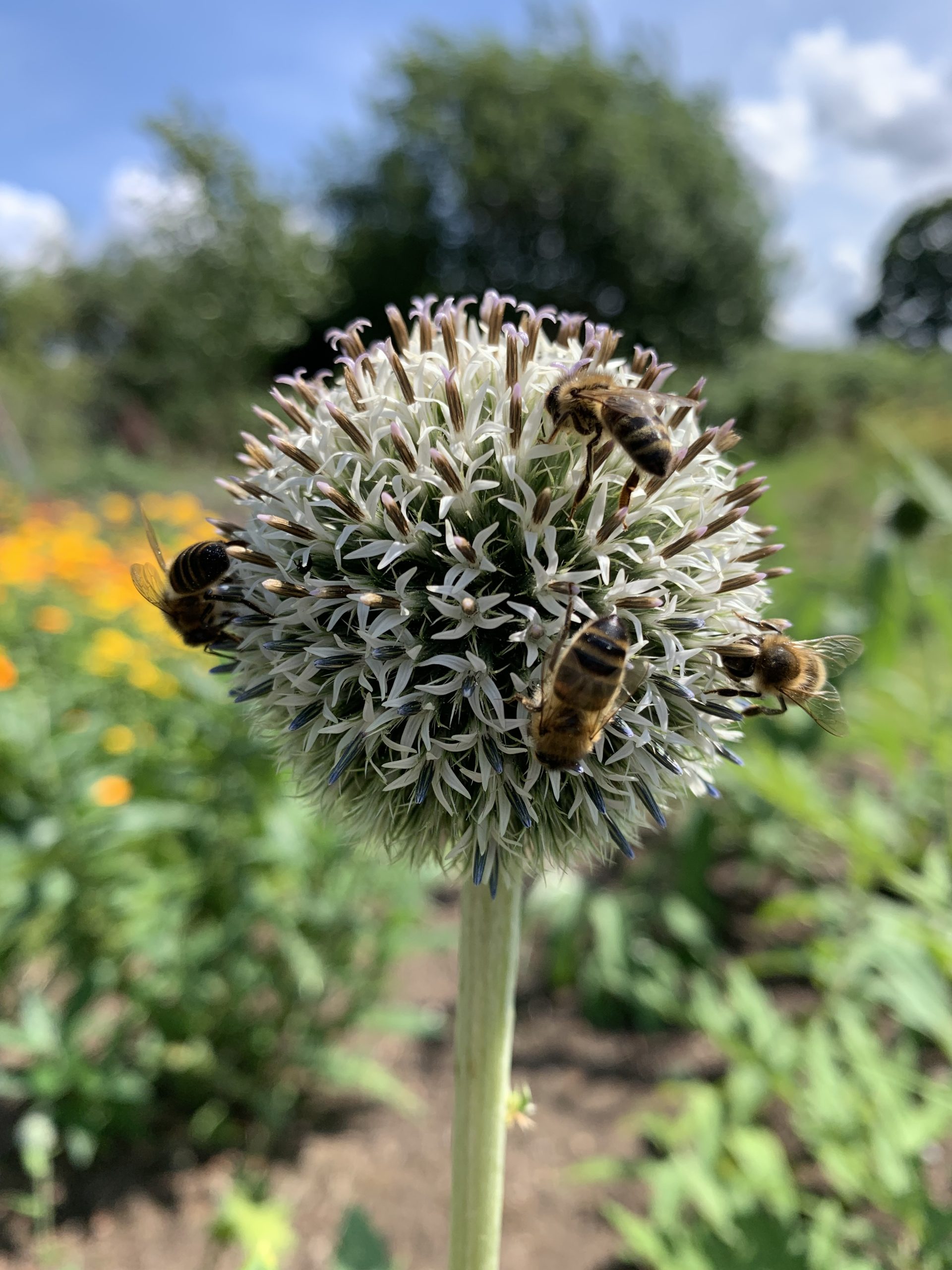
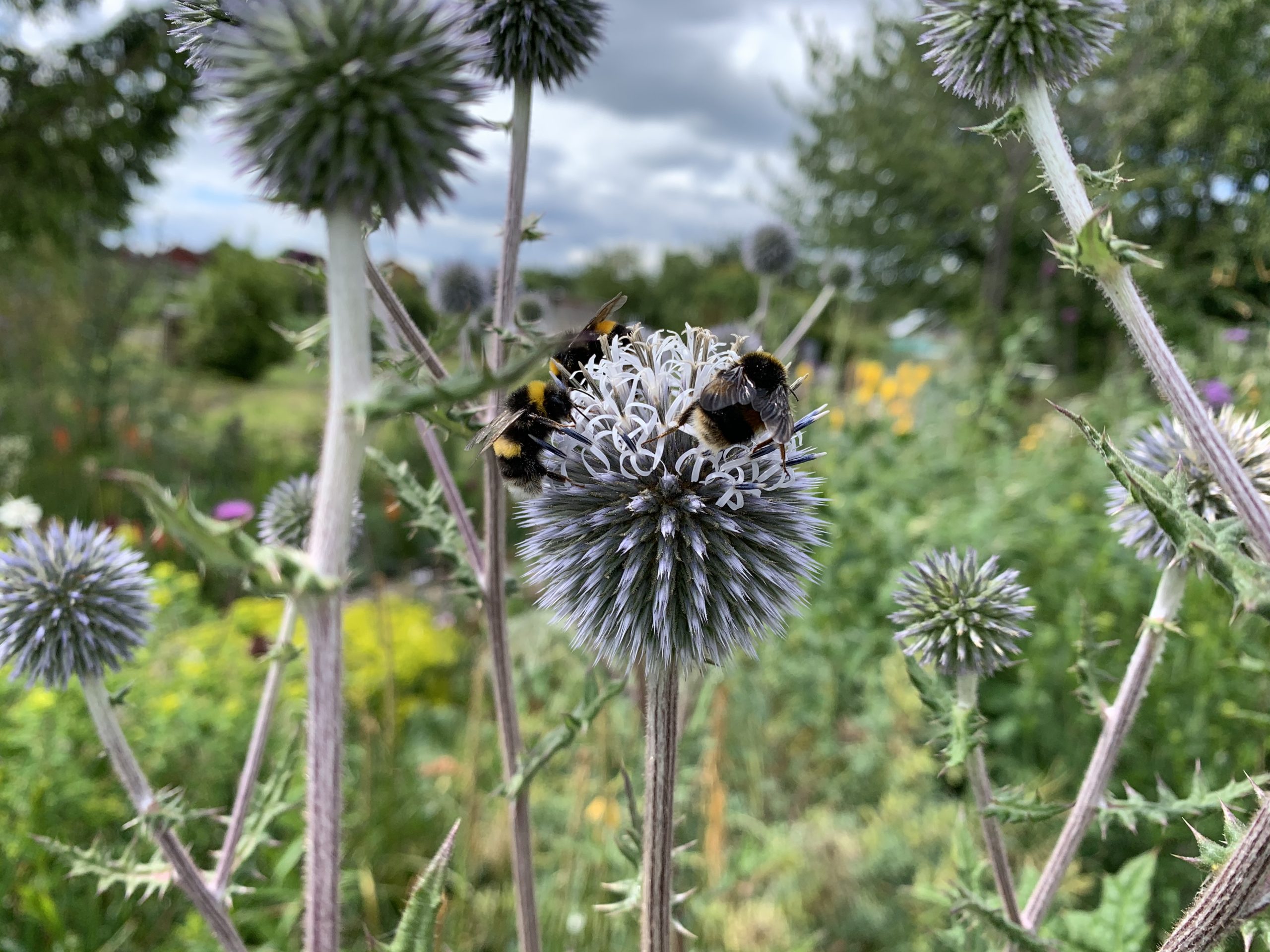
This attractiveness to pollinators stems from the rich pollen and nectar source Echinops provide, with flowers regularly refilling their nectar reserves to keep pollinators coming back for more.
Species and cultivars available in the UK
Relative to the wealth of Echinops diversity to be found within the Echinops genus overall, to date only a tiny fraction of Echinops have found their way into UK horticulture. By far the most well known of these species are Echinops ritro and Echinops bannaticus – which are often confused and can be difficult to tell apart even to an expert!
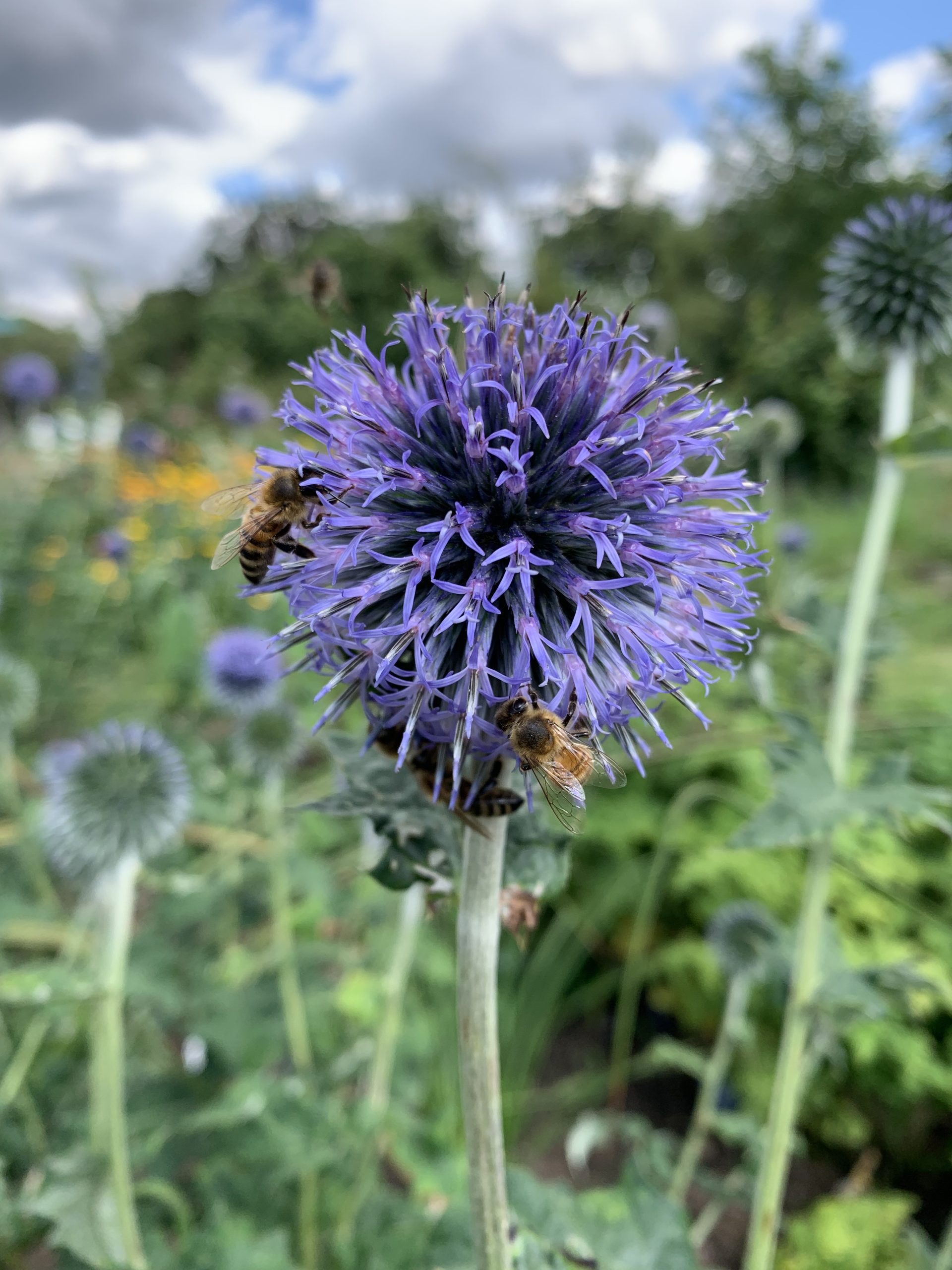
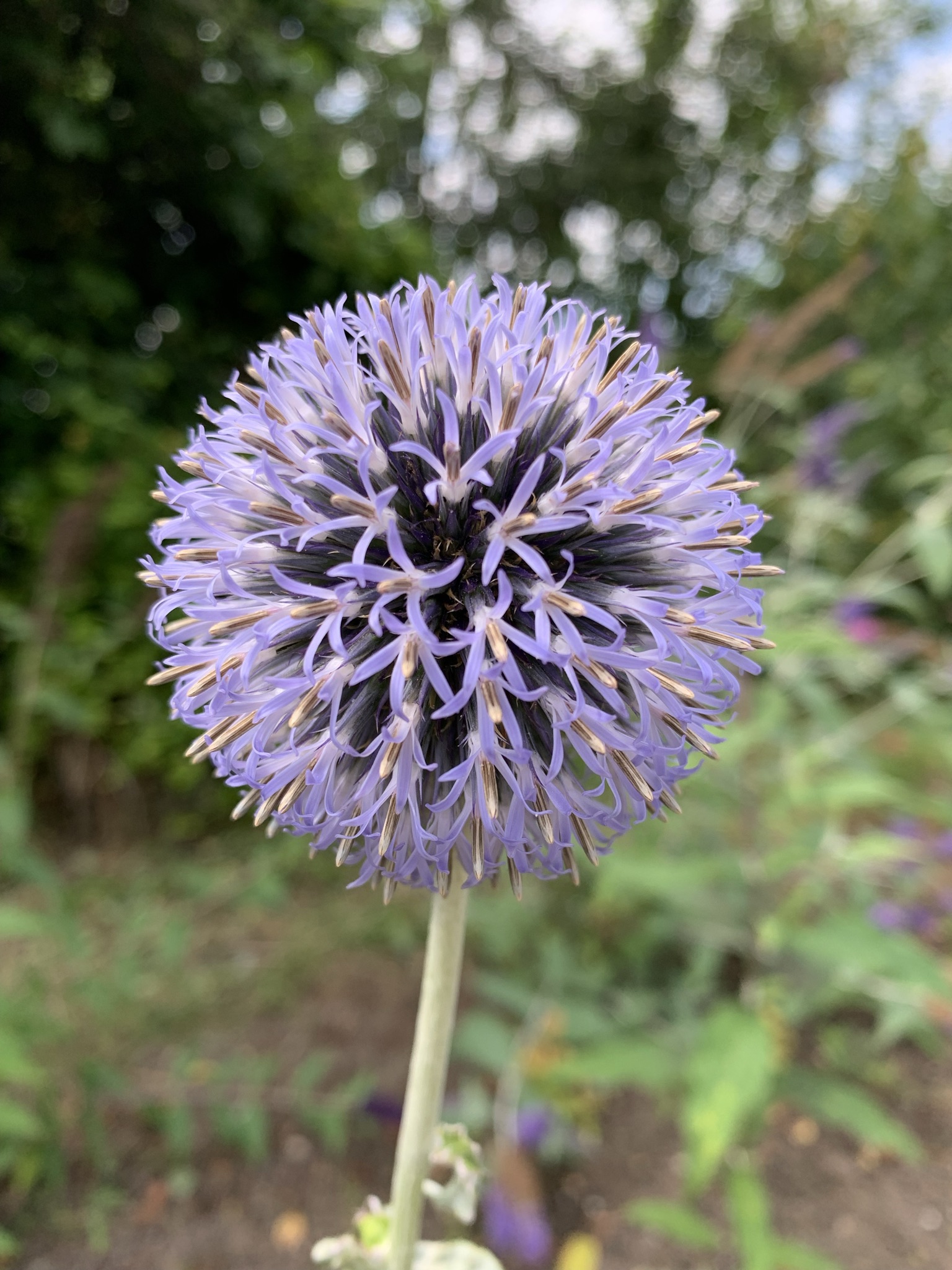
Both species typically have blue flowers, with E. ritro tending to have a more steely/blue developing inflorescence and opening to a darker blue. In contrast, E. bannaticus developing buds tend to be more silvery and open to a paler power blue shade. Of these two species, E. ritro tend to be shorter, reaching an ultimate height of 1-1.5m whereas E. bannaticus frequently reach 1.5-2m!
Cultivars of both species are available, including E. ritro ‘Veitch’s Blue’ (a slightly darker shade of blue than the standard species), E. bannaticus ‘Taplow Blue’ (a slightly paler shade of blue) and E. bannaticus ‘Albus’ (a white flowered form of E. bannaticus).
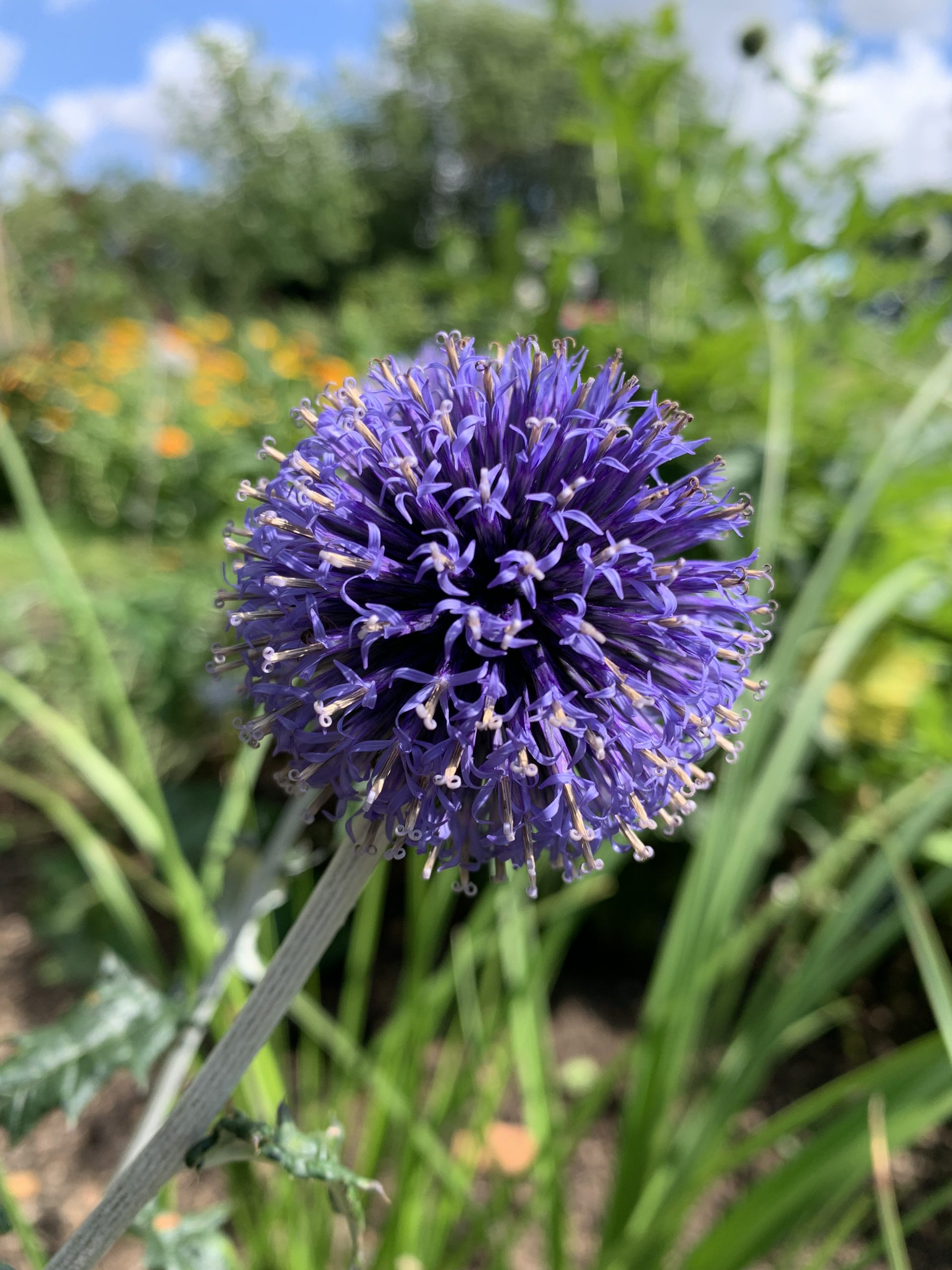
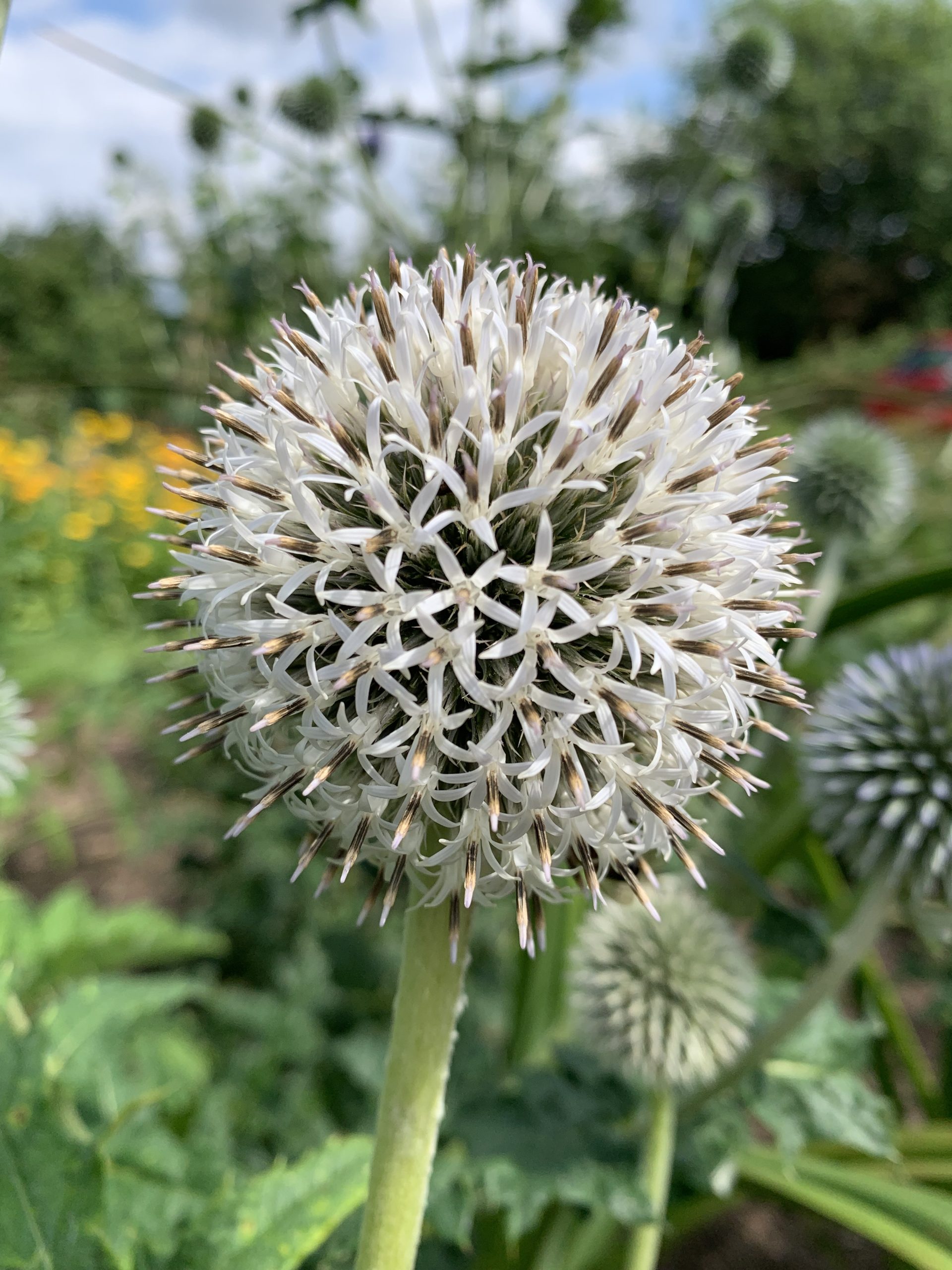
In truth, a majority of these cultivars are more likely to represent minor diversity within the species rather than being purposely bred cultivars – with many cultivars appearing to be different names for the same set of traits. It’s therefore likely that the diversity of Echinops available within the UK is even smaller than it first seems!
With that being said, a few other species have more recently found their way into cultivation including the white flowered and red stemmed Echinops sphaerocephalus, the white flowered 2.5-3m behemoth Echinops exaltatus and the white flowered, smaller, upright and well behaved Echinops gmelinii.

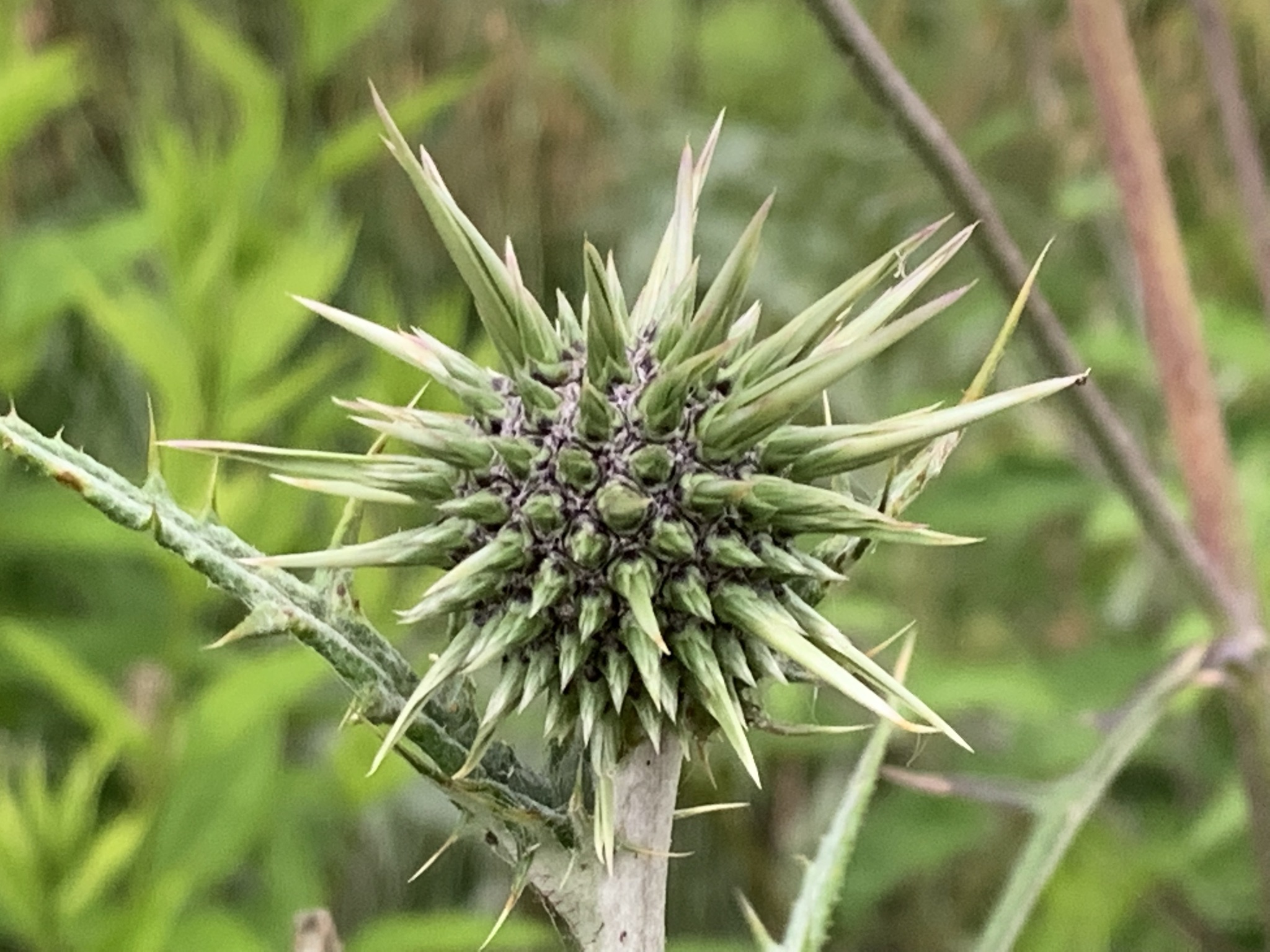
For the thistle connoisseur, perhaps the most exciting recent introduction to the UK is Echinops spinosissimus – an incredibly spiky species with a widespread distribution spanning Albania, Greece, Sicily and as far as Northern Africa!